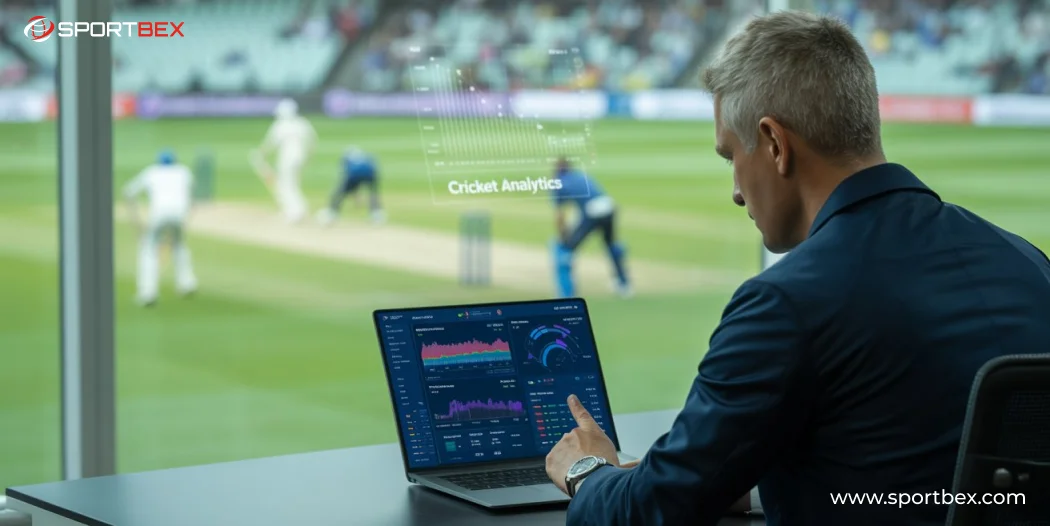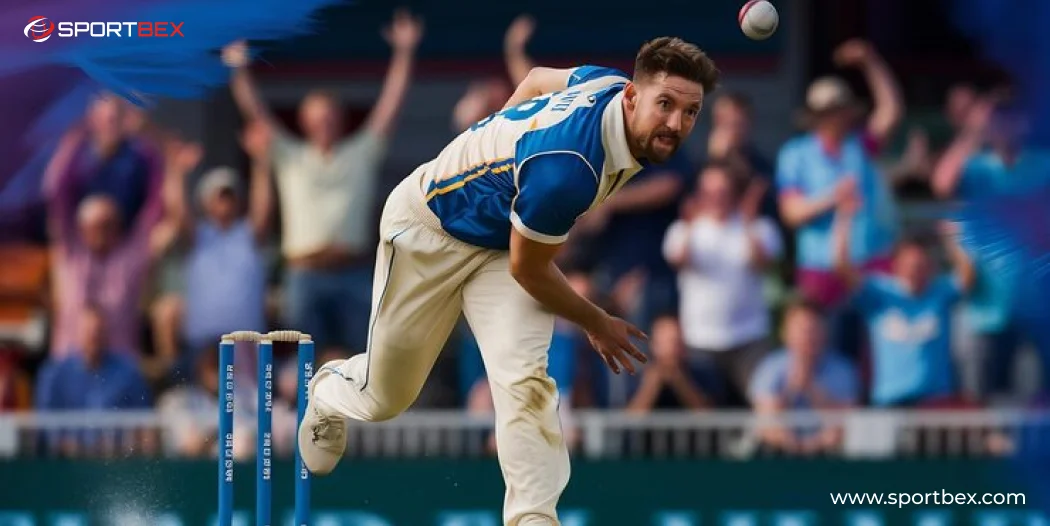However, the modern era of cricket has witnessed a paradigm shift. With the rise of data analytics in cricket, teams are now leveraging vast volumes of data to refine strategies, optimize performance, and make informed decisions.
Advanced tools and techniques are allowing coaches, analysts, and players to study patterns, predict outcomes, and identify hidden opportunities that were previously overlooked. From player selection and performance monitoring to match tactics and fan engagement, cricket analytics is reshaping the way the game is played and experienced.
Today, teams are not just playing matches. They are harnessing cricket data analysis to craft winning strategies, gain a competitive edge, and stay ahead in a rapidly evolving sports industry.
Traditional Cricket Strategy vs Data-Driven Approach
In the past, cricket strategy depended mostly on experience and instinct. Captains and coaches made decisions based on what they had seen over the years rather than using detailed data. Choosing players, deciding the batting order, and planning bowling tactics were often based on reputation and past performance, not on deeper insights.
With the arrival of advanced cricket statistics, this old approach has changed. Data-driven strategies let teams analyze player performance, study opponents, and plan tactics using real evidence.
For example, instead of just trusting a bowler’s reputation, teams can see how effective they are against certain types of batters, pitch conditions, or match situations.
This change shows why cricket data analysis is important. By combining past records with real-time match information, teams can make smarter decisions that reduce risk and increase chances of winning.
Today, instinct still plays a role, but it works together with data to create a stronger, more strategic way of playing cricket.
Applications of Data Analytics in Cricket Strategy
The applications of data analytics in cricket are wide-ranging and have transformed multiple aspects of the game:
1. Player Selection
Cricket data analysis helps teams choose the right players for each match. By studying past performance, teams can see which bowlers bowl well on spinning pitches or which batsmen handle pressure best. This information makes it easier to decide who should play in different conditions.
Coaches can also track players’ form, strengths, and weaknesses to make smarter decisions. Using data in this way ensures that the team has the strongest possible lineup. Overall, player selection is no longer just about experience or intuition; it is guided by detailed analysis to improve the chances of winning.
2. Training and Performance Optimization
Data-driven insights help coaches create personalized training programs for players. By analyzing each player’s strengths and weaknesses, coaches can focus on improving specific skills. For example, a batsman who has trouble facing spin bowlers can receive targeted practice to handle them better.
Similarly, a bowler can work on improving accuracy for yorkers or other deliveries based on performance data. These insights also help monitor progress over time, allowing adjustments to training routines. Overall, using data in training ensures players develop their skills efficiently, perform better in matches, and stay ahead of the competition.
3. Match Strategy
Advanced cricket analytics helps teams make smarter decisions during a match. Through advanced cricket analytics, teams can analyze Cricket Match Stats on opponents and different game situations to plan the best batting order, select the right bowlers, and set effective field placements. Analytics also allows coaches and players to see patterns in the opposition’s play, helping them anticipate moves and respond quickly.
During the game, teams can use statistics to make adjustments that increase their chances of winning. Overall, cricket analytics turns raw data into clear strategies, giving teams a better chance to succeed and perform at their best.
4. Fan Engagement and Business
Analytics also improves the fan experience by providing real-time statistics, ball-tracking data, and player insights. Fans can follow matches more closely, understand player performance, and enjoy interactive features that make watching cricket more exciting.
At the same time, businesses use this data to create predictive models and engaging experiences, such as fantasy leagues or betting platforms. This not only keeps fans more involved but also helps sports organizations increase revenue and grow their audience, making cricket both more entertaining and commercially successful.
5. Real-World Examples
The Indian Premier League (IPL) is leading the way in using data to improve cricket strategies. Teams like the Kolkata Knight Riders use advanced analytics to find talented players, plan their game strategies, and boost performance. By analyzing Cricket Player Stats, past performances, and match patterns, teams can make smarter, data-driven decisions that give them a competitive edge on the field.
International cricket teams are also using cricket data and APIs to study opponents, prepare tactics, and enhance team performance. By using data-driven approaches, teams can make smarter decisions on player selection, match strategies, and overall performance, giving them a strong advantage on the field.
Tools and Techniques in Cricket Data Analytics
Modern cricket analytics uses a combination of statistics, technology, and software tools. Some of the most common and useful methods include:
- Basic Metrics: Batting averages, strike rates, and bowling economy rates give a simple understanding of how players are performing.
- Advanced Cricket Statistics: Analysts now look at detailed stats like dot ball percentages, wagon wheels, and run distributions to get a deeper insight into a player’s performance.
- Bowler Type Analysis: Knowing a bowler’s pace, spin, and variations helps teams figure out which bowlers are most effective against specific batters.
- Pitch and Field Data: Studying pitch conditions, weather, and field placements allows teams to plan match strategies more accurately.
- Technology Integration: Tools such as Hawk-Eye, GPS trackers, and wearable sensors track ball movement, player actions, and fitness levels in real time.
- Cricket Data Visualizations: Graphs, heatmaps, and dashboards make it easier for teams to see performance patterns and make quick, data-driven decisions.
By leveraging tools like Cricket Data Visualization, teams can move from intuition-based decision-making to a more analytical, evidence-based approach, improving efficiency and outcomes in both practice sessions and competitive matches.
Future Developments in Cricket Analytics
The field of cricket analytics is growing rapidly, and the future promises even more exciting developments. One key advancement is the integration of artificial intelligence, which can analyze in-game data in real-time and help teams make dynamic strategy adjustments. Additionally, advanced data sources such as sensors and wearable devices will provide detailed information on player movements, ball trajectories, and physical performance.
Another important area is mental fitness tracking. By monitoring factors like fatigue, focus, and stress levels, teams can optimize training routines and ensure players are ready for high-pressure match situations. Predictive modeling tools, including Sports Data API and API Cricket, will also become more accurate in forecasting match outcomes, player performance, and team tactics.
Finally, enhanced cricket data visualizations will make it easier for coaches and fans to understand complex information quickly. These visual tools will provide clear, actionable insights, allowing teams to make smarter decisions on and off the field. Overall, these developments will make cricket strategy more precise, analytical, and adaptable to changing conditions.
Conclusion
Cricket is not just a game of instinct; it is becoming a game of insights. Data analytics has changed how teams plan their strategies, from picking players and training to match tactics and engaging fans. Using advanced cricket statistics and cricket data analysis, teams can discover hidden patterns, improve performance, and gain a competitive advantage.
As technology grows, tools like AI, wearable sensors, and real-time sports data feeds will make data-driven decisions even more powerful. The future of cricket will belong to teams that combine experience with smart analytics, creating better strategies and more exciting matches for players and fans.
By using cricket analytics, teams can stay ahead in the sports world, improve performance, engage fans more effectively, and achieve long-term growth. Teams that start using these insights today are likely to become the champions of tomorrow.
Frequently Asked Questions
Data analytics in cricket involves collecting, analyzing, and interpreting large volumes of cricket data to make informed decisions about team strategy, player performance, and match tactics.
Cricket analytics helps identify players’ strengths and weaknesses using advanced cricket statistics. By analyzing batting averages, strike rates, bowling economy, and other metrics, coaches can design personalized training programs that optimize performance and reduce errors.
Cricket data analysis relies on tools like Hawk-Eye, wearable sensors, GPS trackers, and software such as Python and AI platforms. Analysts also use cricket data visualizations, heatmaps, and dashboards to interpret patterns and trends effectively.
Data analytics informs several aspects of cricket strategy, including player selection, batting and bowling orders, field placements, and match planning. Teams use historical and real-time data to create evidence-based strategies that maximize winning potential.
While no analysis can guarantee a result, advanced cricket analytics and predictive modeling can forecast likely outcomes, player performance, and team strategies based on historical data and current match conditions.
Recent Blog
Top 10 Esports Betting Sites to Play
October 23, 2025
 9 min
9 minTop 9 Bowlers With Most Wickets In Test Cricket
October 22, 2025
 7 min
7 min






